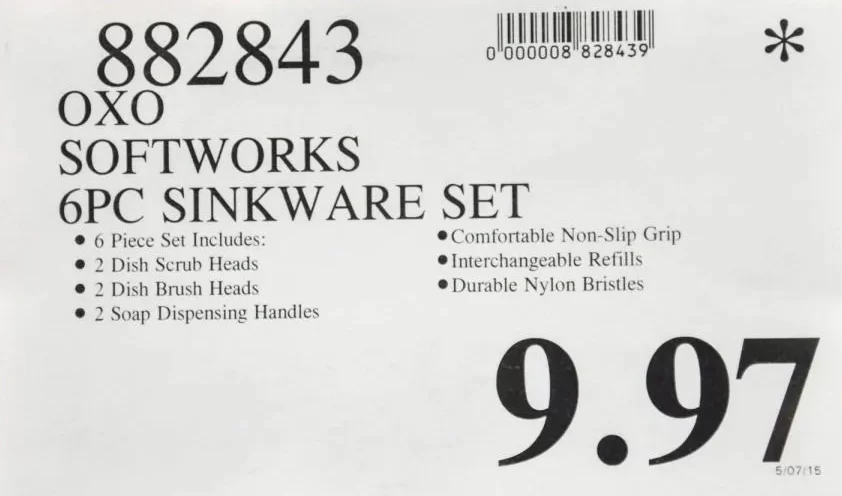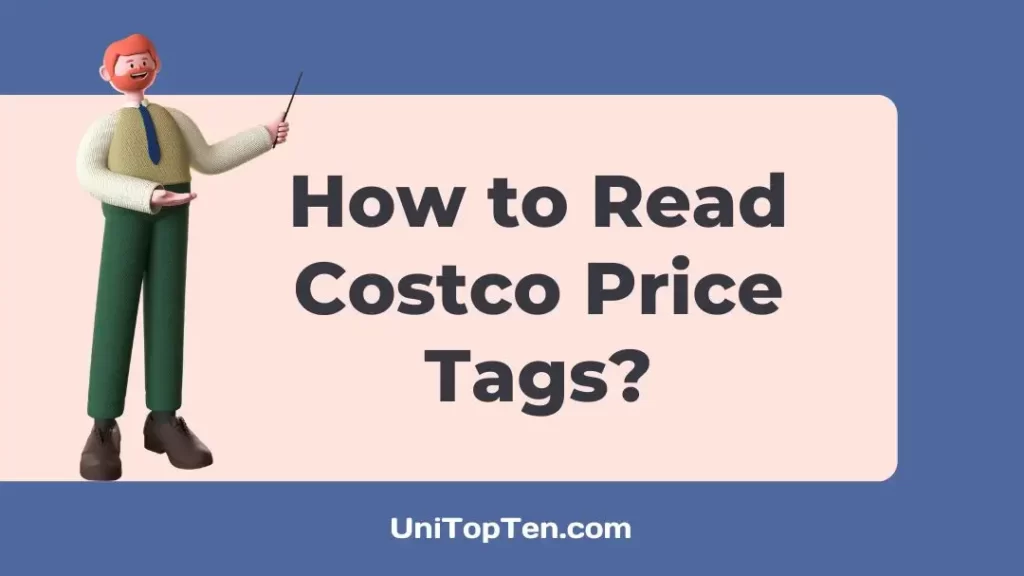Have the numbers and symbols on Costco price tags ever left you feeling confused?
Well, you’re not alone! There are a lot of individuals who don’t understand them, and that may be a real headache when you’re trying to purchase. You may lose out on some significant discounts if you don’t know how to read these codes.
Similarly, if you are not sure how to decipher the letters and codes on your Costco receipt, you could take a look at this article – What Does GP Mean On Costco Receipt? (All Terminology Explained)
Don’t worry, though! To help you make sense of the pricing at Costco, we’ve put together this article. By the time you’re done reading, you’ll know how to spot discounts and find hidden deals. We’ll also explain why dates on tags matter, what “double nines” mean, why asterisks are important, and more. So, stick around for the answers.
Costco price tag codes
-
.97 – The Costco Clearance:
When you see a “.97” price tag at Costco, it’s a clear indicator that they’re having a clearance sale. It’s not simply a bargain; everything with a “.97” price tag is marked down to make room for new inventory.

This indicates that a newer model of the product is probably going to replace it or be discontinued. If you see this discount code, now is the time to stock up since prices have dropped to an all-time low. You won’t want to miss out on these savings on gadgets and other must-haves for the home.
-
.99 – The Standard Costco Price:
It’s time to take a step back and consider when you see a price with a “.99” at the end. This is the regular Costco pricing, so you’re probably still saving money compared to buying the same thing elsewhere.
It is important to note, however, that the item is being offered at its standard Costco price and has not been discounted further. So, it’s not a steal, but it’s not too expensive either.
-
Prices Ending with 9 (.39 or .49):
To spot deals, look for prices that finish in “.39” or “.49.” These tags also indicate a discount, but they usually result from price cuts made by the manufacturer rather than by Costco. Even while the price cut may not be as substantial as “.97” bargains, it’s still probably worth looking into if the product is one you buy often.
-
.00 – Manager’s Special:
When you encounter a price ending in “.00,” it’s like stumbling upon a hidden treasure. If you see this code, it means the item is currently under the manager’s special offer and is being offered at its very lowest price.
That is to say, you must grab the chance to get that thing without delay. If you spot “.00” on a product you’ve had your eye on, don’t wait – seize the deal!
-
The Death Star (*):
Finally, keep an eye out for price tags that include a star in the upper right corner; they are referred to as “the death star.” If an item has this sign, it is almost out of stock and will not be restocked by Costco.
That is why you should not waste any more time and get this offer while you still can. Get it while you can, since it may not be available for much longer, especially if it is a limited-edition, seasonal product.
How to read Costco price tags
1. Products on sale have a price that ends in two zeroes or a seven.
When it comes to identifying sale items, here’s the scoop: if you see a price ending in “.97” or “.00” (like $5.00), you’re in for some serious savings – it’s on clearance! Clothing is a common place to find products at the exact .00 price, making it easy for style-conscious consumers to discover a deal.
Meanwhile, items ending in “.97” can be found across various departments, and these are your golden tickets to substantial discounts. However, there is no separate clearance section to browse through, and Costco does not employ red lines or special discount tags to indicate these offers.
These deals sit in plain sight, but only those who have this price knowledge will be able to find them. If you want to save money the next time you buy at Costco, look for the double zeros and sevens at the end of the price tags.
2. The date printed in the corner of your price tag is not there for decoration.
It’s easy to get excited about saving money when you find a desirable item at a discount at Costco. But did you know that the story might not end there? Here’s a cool trick: Check the date printed in the lower right of the price tag.
This date, which may not appear significant, actually contains an important hint. The date that the price was last changed will be shown there.
There’s a fair probability that an even greater discount is on the way if it’s been a while since the previous update and there isn’t an asterisk on the tag (remember, the asterisk signifies that an item won’t be refilled). That’s right; the date on the label is a sneaky little reminder that you may be able to save even more money before it expires.
3. A double nine or a nine as the last number.
Prices that end in “two nines” (for example, $19.99) are always the normal Costco price. This indicates that no further discounts have been applied and the item is being offered at its full, unadjusted price.
Even while the price isn’t at rock bottom, it’s still a good offer in comparison to retail shops. On the contrary, if the last digit of the price is a single nine (such as $19.49), you’re in for a nice surprise.
Costco often offers merchandise at a discount from the suggested retail price because of the reductions that are negotiated within the price of the goods. You’re receiving a high-quality item at a lower-than-average price, which is where a keen eye for deals comes in handy.
4. Asterisks indicate a time-sensitive offer.
One important indicator to watch out for is the asterisk, strategically positioned in the upper right-hand corner of the price tag. This tiny icon carries important information: it’s a sign that the item’s time on the shelves is limited.
Seeing that asterisk is like getting a secret tip from Costco super-fans. It means there won’t be any more of that product in stock. This information is very helpful for determining which everyday items you should purchase in bulk.
It’s worth noting that the asterisk doesn’t necessarily reveal whether the price is full or reduced. It’s a simple way to warn customers that you won’t be able to buy the item after it sells out. And, armed with this information, you can make informed decisions about your purchases.
5. Organic products are identified by a different color tag.
Going green on the price tag is a simple but effective way to navigate the organic section of Costco, which might otherwise seem like a sea of white price tags. The food at Costco is color-coded so that you can easily tell what is regular and what is organic. Green tags are displayed openly on organic products whereas white tags are used for ordinary ones.
While this approach might be beneficial, it’s crucial to remember that it’s not flawless. While the vast majority of organic items sold at Costco will have a green label, some may not. The goal is quite clear: to make it simpler for consumers to identify organic products.
Look out for the green labels to know you’re getting organic meat and fruit. Although the system has certain flaws, it is nevertheless a useful tool for making your trips to Costco more environment friendly.
FAQs
1. If a Costco price tag ends with .00 or .88, what does it mean?
It’s worth paying attention to the last digit of a Costco pricing, which might be a .00 or .88. This might be because the item has been returned or there are not many available. The business probably doesn’t have many more of these things in stock, since this is a common indicator of low inventory.
It is also assumed that the shop manager has reduced the price in an effort to get rid of the item fast if the price tag ends in .00 or .88. In simpler terms, it’s a signal to shoppers that it’s a good time to buy because the item might disappear soon. In other words, if you like it and find a deal like that, you should definitely buy it.
Final Words
Now that you know how the price tags at Costco work, you may shop there with ease and confidence. No more confusion when you see those numbers and symbols! You can spot discounts, know when to grab a deal and avoid missing out on limited-time offers.

Having earned a Bachelor’s degree in Commerce from Ravenshaw University, with a background in Accounting and Finance, Akshita Pattanayak contributes to UniTopTen by writing clear and concise articles based on Finance-Tech. With more than a hundred fin-tech related articles, she hopes to educate people about how banking and payment apps function.




